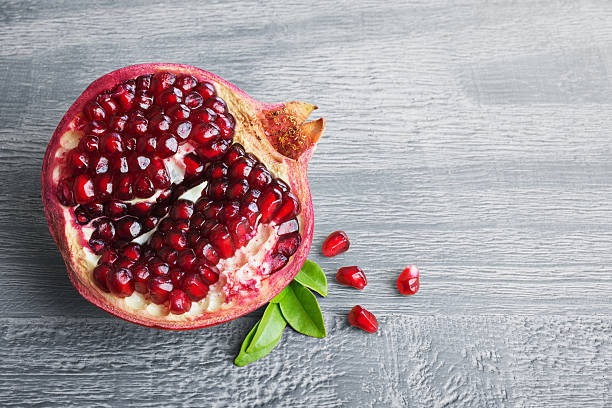
At every meal, especially breakfast, the absurdity, the outrageous absurdity of evolution becomes frighteningly obvious. Take the humble pomegranate. It evolved? How? Did a single pomegranate seed evolve first? If so, starting as some early life form, how could a seed—containing the concept of a pomegranate tree, along with the contents to grow one—have been formed, step by step, with no direction imposed on it?
Or instead of the seed, did the pomegranate itself—a single pomegranate—evolve first? But how could a pomegranate with skin, seeds, and fruit on the seeds, come into existence through a long, slow process of evolution? How many endless proto pomegranates sitting on the ground (where else?) over millions of years came and went until one, finally, became a functioning and edible pomegranate (seeds, skin, and fruit together)?
Or maybe the pomegranate tree began it all? But what evolved first: the roots, the trunk, the branches, the leaf, or the pomegranate itself with seeds within it? Or did they all start evolving at once: a partial root, a partial trunk, a partial branch, a partial leaf, and a partial pomegranate with partial seeds until, finally—after millions of inchoate and evolving proto-pomegranate trunks and roots and leaves and seeds arising, dying, rotting—one, the fittest, survived into the first full-fledged pomegranate tree, the progenitor of all other pomegranates? (How, though, does the nutritive value of the pomegranate, along with its appealing taste, smell, and texture, fit in with this “survival of the fittest” story, anyway? Would not an uglier, unhealthier, and more tasteless pomegranate add to its survivability?)
Also, where did the idea of a pomegranate, or a pomegranate seed, or pomegranate tree come from to begin with? In evolutionary theory, there was never an idea of anything pomegranatey at all. Just wait long enough and, sooner or later, thanks to random mutation and natural selection, a pomegranate tree—seeds, trunk, leaves, root and fruit—will just happen. That’s, at least, the narrative.
Evolutionists who want a Christian spin on creation would answer, of course, that Jesus, the Creator (see John 1:13), did it.
OK. But how?
Did Jesus first put the idea of a pomegranate seed in some very early life form, and then let that life form over millions of years (with a divine tweak every now and then) evolve into a pomegranate seed, which spawned the first pomegranate tree?
Or did He put into this early life the idea of a pomegranate and then said, “And let it evolve into a pomegranate, from whose seeds the tree, bearing its own seed, will come. And (millions of years later) it was so”?
Or did Jesus put the idea of a pomegranate tree into that early life form first? And, then simply let nature take its course until, eons later, the first pomegranate tree emerged?
However Jesus supposedly did it, evolution still demands millions of years of pre-pomegranate seeds, pre-pomegranates trees, and pre-pomegranates themselves fading in and out, step by step, until (again, maybe with fine-tuning) the first pomegranate tree—seeds, leaves, trunk, branches and pomegranates—finally arrived as a functioning and reproducing whole.
What other options are there? Evolutionary biologists tell us that Genesis 1:11— “Then God said, ‘Let the earth bring forth grass, the herb that yields seed, and the fruit tree that yields fruit according to its kind, whose seed is in itself, on the earth;’ and it was so” (Genesis 1:11)— cannot be true. But the pomegranate is still here, and because it had to come from somewhere, I humbly ask, From where?
If any of the above scenarios are off, could someone—too “enlightened” to believe in Genesis 1:11—explain how the pomegranate evolved? And if they don’t know how the pomegranate did, how about the blueberry, the avocado, the apple, the melon, the radish, the peach, the almond, the cherry, the tomato—or even the potato? How did any of these, or their first progenitor, step by step, slowly evolve into existence?
In stunning contrast, there is the six-day creation (Genesis 1-2), in which the love and power of God, tasted in every plant-based bite, reveals the “wisdom of the world” (1 Corinthians 3:19) as obviously, even outrageously, wrong.
Clifford Goldstein is the editor of Adult Bible Study Guides at the General Conference of Seventh-day Adventists, and a longtime columnist for Adventist Review.